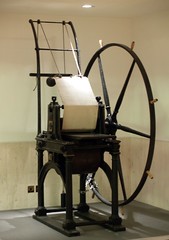The Statute of Anne: “An Act for the Encouragement of Learning”
By Kristopher A. Nelson
in
April 2010
300 words / 2 min.
Tweet
Share
300 years ago Saturday, the Statute of Anne created the first modern system of copyright.
Please note that this post is from 2010. Evaluate with care and in light of later events.
 300 years ago Saturday, the Statute of Anne created the first modern system of copyright. A few fun facts about the Act:
300 years ago Saturday, the Statute of Anne created the first modern system of copyright. A few fun facts about the Act:
- Violating copyright was defined as “infringement,” not “theft” (and remains so today).
- Before the Act, printers, not authors, were the ones granted monopoly rights over works.
- The United States, before and after the Act, was the source of many illicit reprints of British texts–since America did not get similar copyright rules until much later.
- Copyright was designed to create an incentive to create, but to still permit an eventual public benefit by expanding the public domain.
Want more discussion on how copyright ought to function? To commemorate the anniversary, the British Council asked just that question:
The world’s first copyright law was passed by the English Parliament on 10 April 1710 as ‘An Act for the Encouragement of Learning’. Its 300th anniversary provides a unique opportunity to review copyright’s purposes and principles. If today we were starting from scratch, but with the same aim of encouraging learning‚ what kind of copyright would we want?
There are a number of interesting ideas in there that are worth thinking about, including:
- Cory Doctorow’s proposal that copyright law ought to “recognize and celebrate the wonderful thing that is copying.”
- Mark Shuttleworth suggests, “It’s time to get creative about the incentives for creation.”
- Alex Fleetwood writes, “Copyright has become synonymous with the protection of endangered cultural industries.”
- Lawrence Lessig believes that the “problem that we are confronting is the result of a law that has been rendered hopelessly out-of-date by new technologies.”